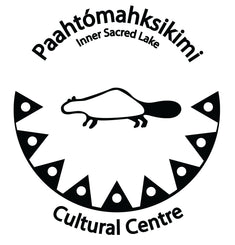Blackfoot Culture & Waterton
Traditionally, Paahtómahksikimi was a place for gathering, peacemaking or treatymaking between the Blackfoot Confederacy and other First Nations. The Blackfoot established trading alliances with many nations. Paahtómahksikimi is one of many gathering places where they met and traded. For example, they traded Buffalo robes and guns for red clay ochre paint, salmon, and dentillium shells with the Shuswap and Okanagan.
Long before explorers, park founders and surveyors named mountains, rivers and valleys in Waterton Lakes, Blackfoot people named the places that are important to them. Mountains are alive and the Blackfoot name them as they name people: Nii’tsitsspitaa - The Only Tall Person (Mount Cleveland), or Sáíkímao’pii – The Person Who Sits Across the Valley (Mount Crandell). Our way of life is enhanced by the knowledge and experience we have from being in these places.
Blood Indian Reserve No. 148a. In accordance with the Blackfoot Treaty of 1877 (Treaty 7) a timber reserve was set aside for the use and benefit of the Blood Tribe/Kainai and designated as Reserve No 148A in 1889. Commonly referred to as the “Timber Limit”, it is situated along the Belly River about 64km (40 miles) southwest of the main Kainai Reserve No 148. The Timber Limit is comprised of 1,940 hectares (4,795 acres) and is managed by the Blood Tribe/Kainai and remains a very important area for traditional ceremonies, harvesting and maintaining a connection to the land.

